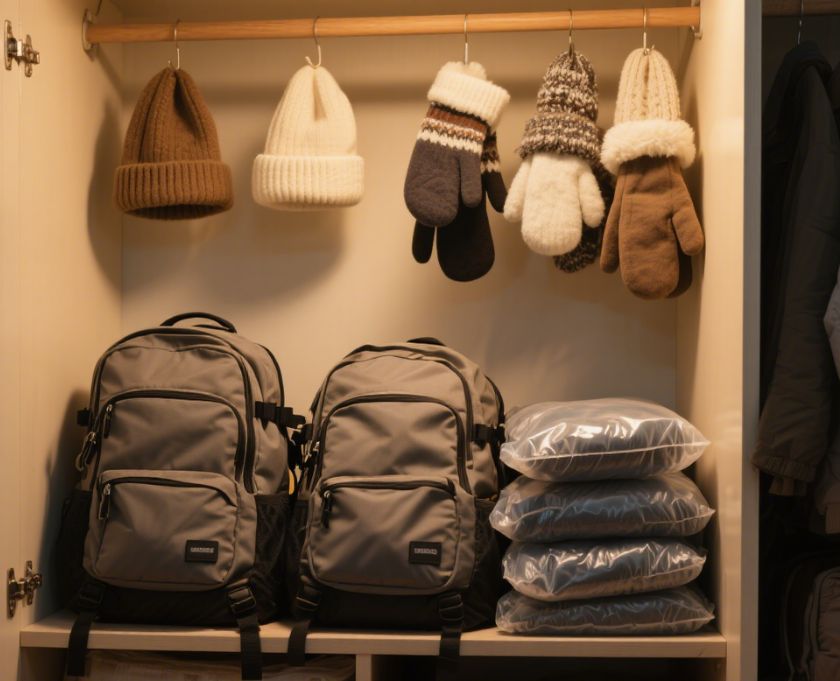Beautiful Plants For Your Interior

Packing for a winter trip is no small feat. Between puffer jackets, wool sweaters, scarves, and thermal layers, your luggage fills up faster than you can zip it shut. But there’s a smart solution: the vacuum compression backpack. Designed for efficient space usage, these backpacks can shrink down even your bulkiest winter garments—without sacrificing warmth or accessibility.
In this guide, we’ll explore how vacuum compression backpacks work, why they’re ideal for cold weather travel, and share practical tips for packing efficiently.
1. Why Winter Clothes Are a Packing Nightmare
Winter gear is essential—but it’s notoriously bulky. Items like:
- Down jackets
- Fleece pullovers
- Heavy thermals
- Insulated pants
- Beanies and gloves
… take up a lot of room. Even the most experienced travelers struggle to fit it all in a carry-on. Add to that the need for extra layers, and suddenly you’re facing the risk of overweight luggage—or worse, needing multiple bags.
That’s where vacuum compression backpacks come in.
2. What Is a Vacuum Compression Backpack?
A vacuum compression backpack is a travel backpack that includes built-in vacuum or manual air-release technology to compress your clothing into a smaller volume. Some models come with a USB-powered pump or an integrated hand pump, while others use one-way air valves and compression zippers.
These backpacks are especially helpful for winter travel because they:
- Compress bulky clothing by removing trapped air
- Reduce overall volume and maximize packing space
- Keep clothes organized and separated
- Offer waterproof protection in snow and slush
They’re not just for minimalists—they’re for anyone tired of lugging around oversized luggage in the cold.
3. How to Pack Bulky Winter Clothes with a Vacuum Compression Backpack
Step 1: Choose the right garments
Stick to compressible materials like down or synthetic insulation. Avoid stiff fabrics that don’t shrink well.
Step 2: Fold strategically
Roll or fold your clothes tightly. Use compression cubes inside the backpack to separate layers and create compartments.
Step 3: Use the vacuum feature
Activate the built-in pump or valve system to remove excess air. Watch your jacket shrink to a fraction of its size!
Step 4: Organize by priority
Keep essentials like gloves and scarves accessible in outer compartments. Pack heavier items toward the bottom for balance.
Step 5: Seal it up
Use the compression straps or zippers to tighten the pack. Now you’re ready to go—with space to spare.
4. Benefits of Using Vacuum Compression Backpacks for Winter Travel
✅ Saves Space
Easily fit enough layers for a week in the Alps without overstuffing.
✅ Reduces Bag Size
Stay within airline carry-on limits—even with heavy gear.
✅ Keeps Items Dry
Most bags are water-resistant or waterproof—ideal for snow.
✅ Prevents Wrinkles
Tight packing keeps clothing from shifting around, which can reduce creasing.
✅ Improves Mobility
Less bulk means easier handling on trains, buses, and crowded airports.
5. Pro Tips for Cold Weather Packing
- Layer Smart: Pack thermals instead of thick base layers. You’ll get the warmth without the volume.
- Wear the Heaviest Gear: If possible, wear your boots and coat on travel day. Save space inside the pack.
- Pack Dual-Use Items: A hoodie that doubles as a pillow? Yes, please.
- Use Accessories Wisely: Gloves, hats, and socks can be packed into shoes to save space.
- Don’t Overpack: Compression helps, but weight still matters—especially for carry-on restrictions.
6. Ideal Scenarios for Winter Compression Backpacks
- ❄️ Ski trips
- 🌨️ Business travel in cold cities
- 🧊 Winter hiking or trekking adventures
- 🛄 Backpacking across colder regions
- ✈️ Quick weekend getaways in snowy areas
Whether you’re headed to Iceland or planning a Christmas trip to Canada, a vacuum compression backpack is your best companion for smart, compact packing.
7. What to Look for When Buying One
When shopping for a winter-ready vacuum backpack, consider:
- Capacity (usually 20–40L for carry-on; 50L+ for extended travel)
- Compression mechanism (manual valve vs. electric pump)
- Weather resistance
- Weight
- Interior organization (dividers or mesh pockets)
- Comfortable straps and back support
Final Thoughts: Make Winter Packing Easier and Smarter
Don’t let heavy coats and fluffy scarves ruin your packing strategy. With a vacuum compression backpack, you can travel light—even in heavy winter gear. It’s a practical, reliable solution that keeps your luggage neat, manageable, and efficient.
Whether you’re a frequent traveler or heading out on your first snowy escape, investing in one of these space-saving backpacks can transform how you pack forever.